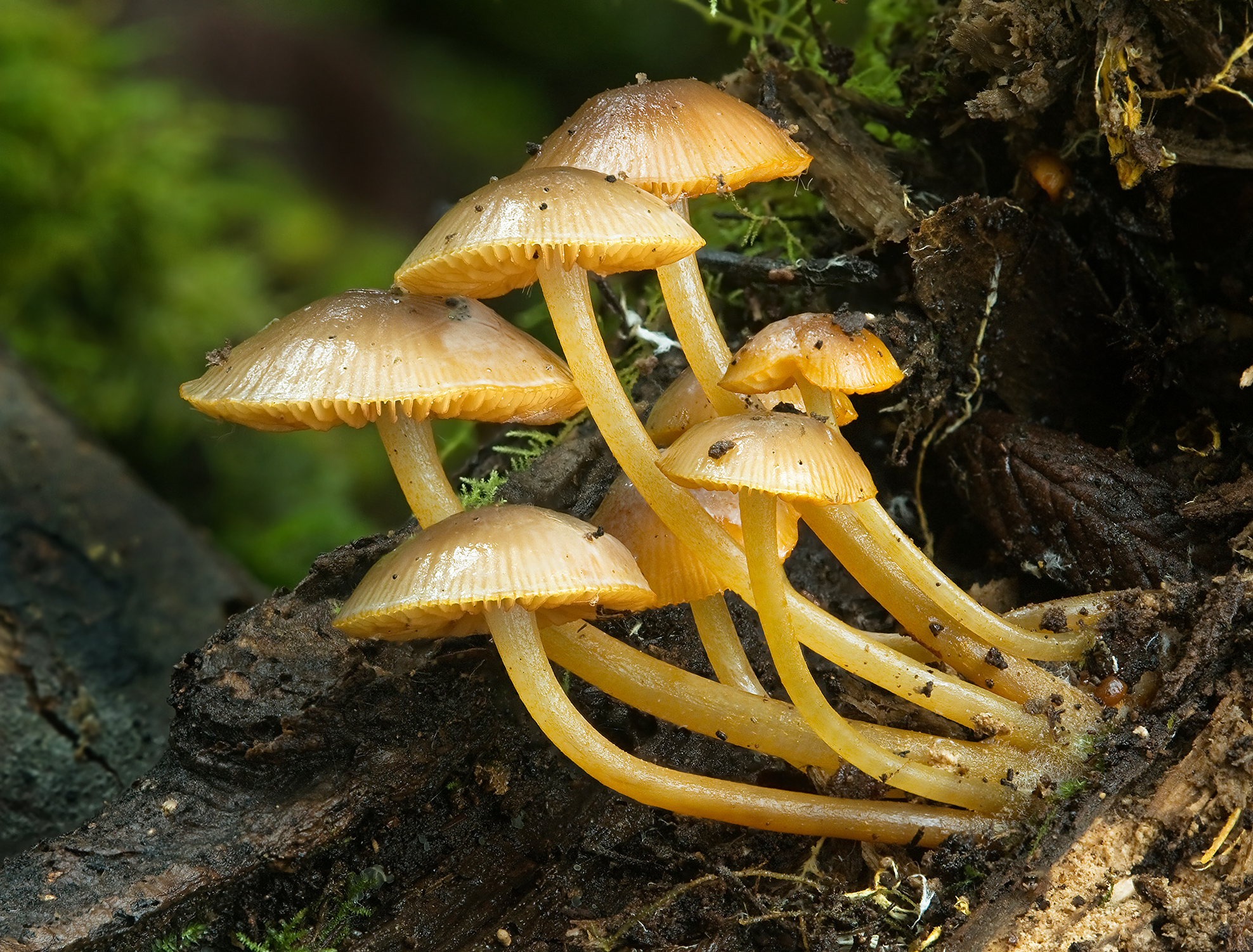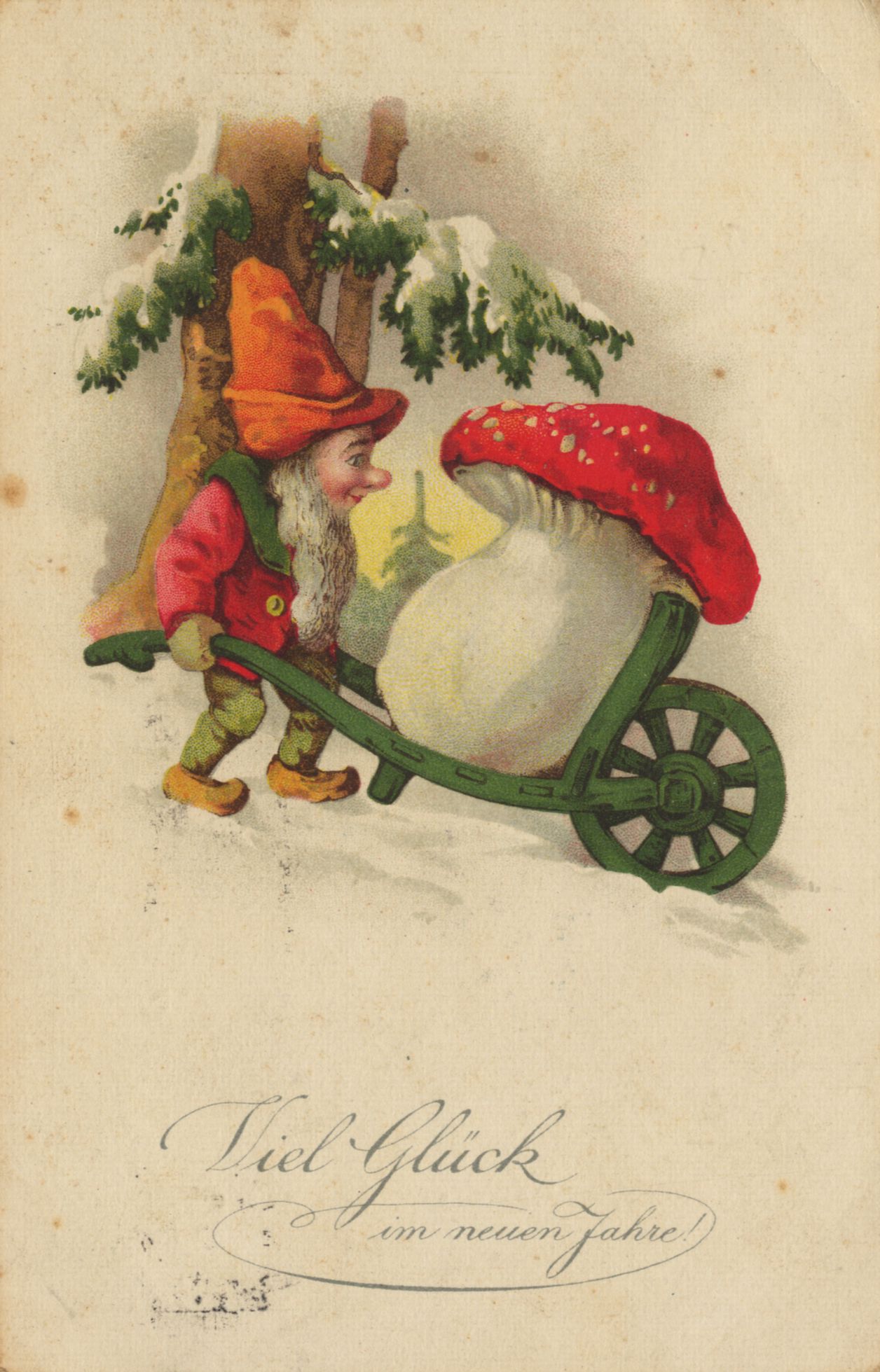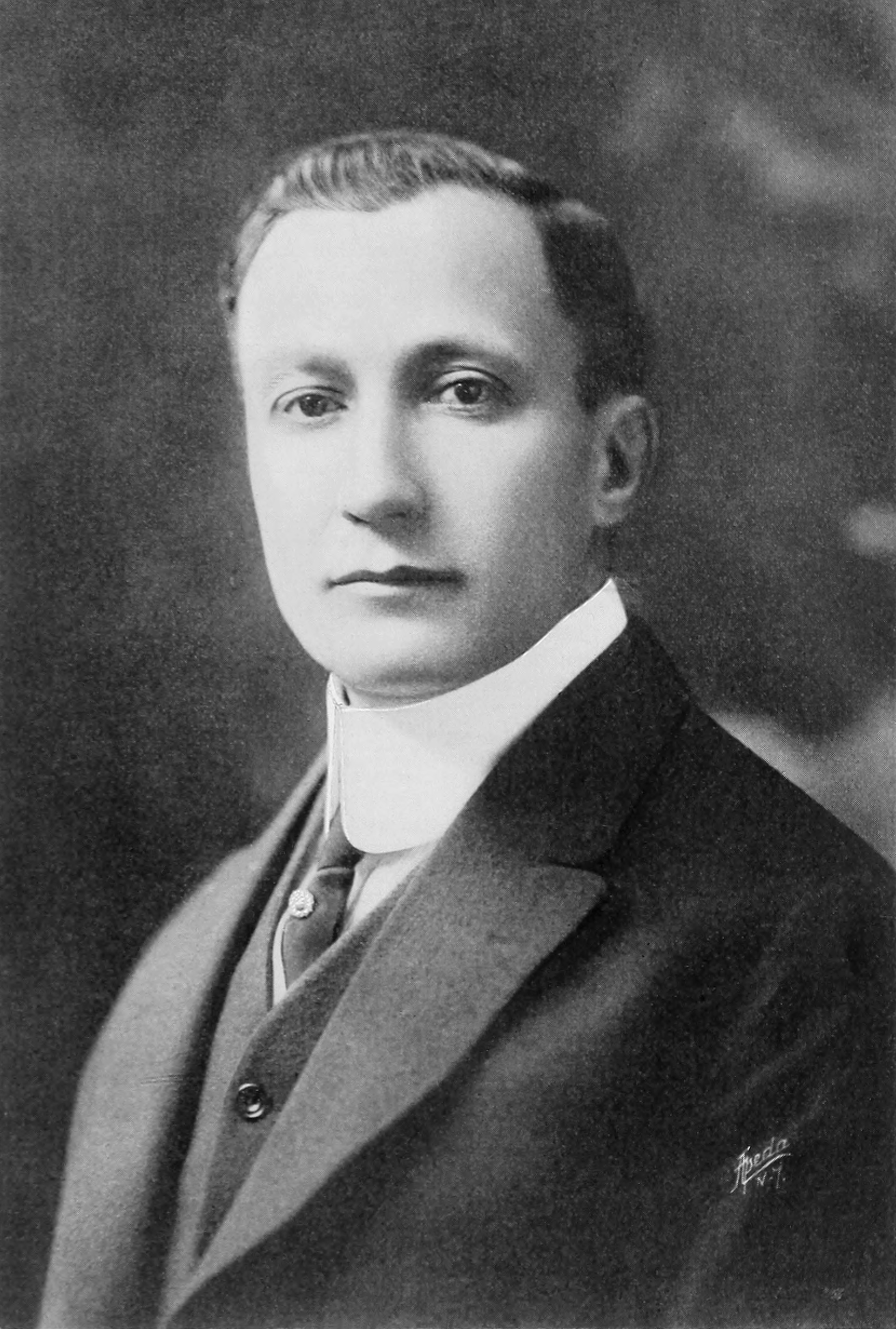|
Louis-Luc Godey
Louis-Luc Godey (8 September 1813 in Saint-Lô - 17 February 1873) was a French mycologist known for his detailed illustrations of many European species of mushrooms. He was the first to describe ''Lepiota brebissonii'' (later reclassified as ''Leucocoprinus brebissonii'').'''' Career Godey was originally an art teacher. He later trained as a doctor and took up mycology as a hobby while practicing in Normandy, working with the naturalist Louis Alphonse de Brébisson. A collection of his watercolours of fungi are held at the science library of the University of Caen Normandy. The botanist Claude Casimir Gillet published ''Les'' ''Hyménomycètes de France'' in 1874, the year after Godey's death, using paintings of Godey's that he had gained access to. Mycologist Jean-Philippine Rioult at the University of Caen discovered that in some cases Gillet had copied, traced, and in some cases published Godey's work as his own, only acknowledging Godey as having collected the described n ... [...More Info...] [...Related Items...] OR: [Wikipedia] [Google] [Baidu] |
Mycology
Mycology is the branch of biology concerned with the study of fungus, fungi, including their Taxonomy (biology), taxonomy, genetics, biochemistry, biochemical properties, and ethnomycology, use by humans. Fungi can be a source of tinder, Edible mushroom, food, traditional medicine, as well as entheogens, poison, and fungal infection, infection. Yeasts are among the most heavily utilized members of the fungus kingdom, particularly in food manufacturing. Mycology branches into the field of phytopathology, the study of plant diseases. The two disciplines are closely related, because the vast majority of plant pathogens are fungi. A biologist specializing in mycology is called a mycologist. Overview The word ''mycology'' comes from the Greek language, Ancient Greek: wikt:μύκης, μύκης (''mukēs''), meaning "fungus" and the suffix (''-logia''), meaning "study." Pioneer mycologists included Elias Magnus Fries, Christiaan Hendrik Persoon, Heinrich Anton de Bary, Elizabeth E ... [...More Info...] [...Related Items...] OR: [Wikipedia] [Google] [Baidu] |
Saint-Lô
Saint-Lô (, ; ) is a Communes of France, commune in northwest France, the capital of the Manche department in the region of Normandy (administrative region), Normandy.Commune de Saint-Lô (50502) INSEE Although it is the second largest city of Manche after Cherbourg-en-Cotentin, Cherbourg, it remains the Prefectures in France, prefecture of the department. It is also chef-lieu of an Arrondissements of France, arrondissement and two Cantons of France, cantons (Canton of Saint-Lô-1, Saint-Lô-1 and Canton of Saint-Lô-2, Saint-Lô-2). The placename derives from that of a local saint, Laud of Coutances. The commune has 18,931 inhabitantsMunicipal population 2012. who are called Saint-Lois(es). The names of Laudois(es), Laudien(ne)s or Laudinien(ne)s are also ci ... [...More Info...] [...Related Items...] OR: [Wikipedia] [Google] [Baidu] |
Mycologist
Mycology is the branch of biology concerned with the study of fungi, including their taxonomy, genetics, biochemical properties, and use by humans. Fungi can be a source of tinder, food, traditional medicine, as well as entheogens, poison, and infection. Yeasts are among the most heavily utilized members of the fungus kingdom, particularly in food manufacturing. Mycology branches into the field of phytopathology, the study of plant diseases. The two disciplines are closely related, because the vast majority of plant pathogens are fungi. A biologist specializing in mycology is called a mycologist. Overview The word ''mycology'' comes from the Ancient Greek: μύκης (''mukēs''), meaning "fungus" and the suffix (''-logia''), meaning "study." Pioneer mycologists included Elias Magnus Fries, Christiaan Hendrik Persoon, Heinrich Anton de Bary, Elizabeth Eaton Morse, and Lewis David de Schweinitz. Beatrix Potter, author of '' The Tale of Peter Rabbit'', also made signific ... [...More Info...] [...Related Items...] OR: [Wikipedia] [Google] [Baidu] |
Mushrooms
A mushroom or toadstool is the fleshy, spore-bearing fruiting body of a fungus, typically produced above ground on soil or another food source. ''Toadstool'' generally refers to a poisonous mushroom. The standard for the name "mushroom" is the cultivated white button mushroom, '' Agaricus bisporus''; hence, the word "mushroom" is most often applied to those fungi (Basidiomycota, Agaricomycetes) that have a stem ( stipe), a cap ( pileus), and gills (lamellae, sing. lamella) on the underside of the cap. "Mushroom" also describes a variety of other gilled fungi, with or without stems; therefore the term is used to describe the fleshy fruiting bodies of some Ascomycota. The gills produce microscopic Spore#Fungi, spores which help the fungus spread across the ground or its occupant surface. Forms deviating from the standard Morphology (biology), morphology usually have more specific names, such as "bolete", "truffle", "puffball", "stinkhorn", and "morel", and gilled mushrooms t ... [...More Info...] [...Related Items...] OR: [Wikipedia] [Google] [Baidu] |
Leucocoprinus Brebissonii
''Leucocoprinus brebissonii'', commonly known as the gray-eyed dapperling, is a species of mushroom producing fungus in the family Agaricaceae. It is also known as the skullcap dapperling due to its distinctive pattern on the cap. This mushroom was only thought to be found in Europe but it has since been observed in the Pacific Northwest and may also be found in Asia. Taxonomy Its description by the French mycologist Louis-Luc Godey, who classified it as ''Lepiota brebissoni,'' was first published in 1874.'''' It was later reclassified as ''Leucocoprinus brebissonii'' in 1943 by the French mycologist Marcel Locquin. In 1953 the Japanese mycologist Tsuguo Hongo documented a species from Ōtsu, Japan which he classified as ''Leucocoprinus otsuensis'' having previously classified it as ''Lepiota otsuensis''. Hongo noted that the species was very similar to ''L. brebissonii'' but that it could be distinguished from it by the squamules (scales) on the cap. These may now be cons ... [...More Info...] [...Related Items...] OR: [Wikipedia] [Google] [Baidu] |
Louis Alphonse De Brébisson
Louis Alphonse de Brébisson (25 September 1798 – 26 April 1888) was a French botanist and photographer born in Falaise, Calvados. In his youth, he was interested in mineralogy and entomology, but his focus soon turned to botany. He is renowned for "''Flore de la Normandie''", a work on vegetation native to Normandy that was published over multiple editions.Sociétés savantes de France biographical information He was the author of several papers on Diatomaceae and , and was possibly the only French scientist researching these algae groups at the time. He also conducted extensive investigations of |
University Of Caen Normandy
The University of Caen Normandy (French: ''Université de Caen Normandie''), also known as Unicaen, is a public university in Caen, France. History The institution was founded in 1432 by John of Lancaster, 1st Duke of Bedford, the first rector being a Cornishman, Michael Tregury, afterwards Archbishop of Dublin. It originally consisted of a faculty of Canon Law and a faculty of Law. By 1438, it already had five faculties. The foundation was confirmed by the King of France Charles VII the Victorious in 1452. On 7 July 1944 the university was completely destroyed by aerial bombing during Operation Charnwood, an action of the Battle of Caen. Between 1944 and 1954, the university was based in the buildings of the regional teachers’ college. A new campus was designed by Henry Bernard and constructed between 1948 and 1957. The new university was inaugurated on 1 and 2 June 1957. Its logo, the mythical Phoenix, symbolises this revival. Rankings Notable people Notable alumni ... [...More Info...] [...Related Items...] OR: [Wikipedia] [Google] [Baidu] |
Claude Casimir Gillet
Claude Casimir Gillet (19 May 1806 in Dormans, department of Marne (department), Marne – 1 September 1896 in Alençon), was a French botanist and mycologist. He initially trained as a medical doctor and veterinarian. As a veterinarian, he worked for four years in Africa. Around 1853 he developed a passion for mycology, subsequently publishing a number of works on the subject. In 1867 he became a corresponding member of the ''Société Linnéenne de Normandie''. Gillet was the binomial authority, taxonomic authority of the genera ''Tubaria'' (initially named a subgenus of ''Agaricus'' by Worthington George Smith) and ''Microglossum''. MycoBank. International Mycological Association He was honoured in 1899, when botanists P.A.Saccardo & P.Sydow published ''Gilletiella' ... [...More Info...] [...Related Items...] OR: [Wikipedia] [Google] [Baidu] |
Inocybe Godeyi
''Inocybe godeyi'' is a species of Inocybaceae fungus found in Europe. The species produces mushrooms with cone-shaped caps up to in diameter. The caps are cream, becoming browner, but they bruise red. The stem is up to long, and has a "bulb" at the base. The white flesh has a strong smell and an acrid taste. The mushrooms can be found on forest floors in autumn months; the species forms an ectomycorrhizal relationship to surrounding trees, favouring beech. ''I. godeyi'' is known to be poisonous, containing muscarine compounds, and consumption of the mushrooms can lead to SLUDGE syndrome. The species is sometimes mistaken for the deadly '' I. erubescens''. First described by Claude Casimir Gillet, the species retains the name which it was first given, but has a number of taxonomic synonyms. Its specific name honours Louis-Luc Godey. Within the genus '' Inocybe'', it has been classified in a number of ways, but appears to form part of a clade (that is, a grou ... [...More Info...] [...Related Items...] OR: [Wikipedia] [Google] [Baidu] |
Cambridge University Press
Cambridge University Press was the university press of the University of Cambridge. Granted a letters patent by King Henry VIII in 1534, it was the oldest university press in the world. Cambridge University Press merged with Cambridge Assessment to form Cambridge University Press and Assessment under Queen Elizabeth II's approval in August 2021. With a global sales presence, publishing hubs, and offices in more than 40 countries, it published over 50,000 titles by authors from over 100 countries. Its publications include more than 420 academic journals, monographs, reference works, school and university textbooks, and English language teaching and learning publications. It also published Bibles, runs a bookshop in Cambridge, sells through Amazon, and has a conference venues business in Cambridge at the Pitt Building and the Sir Geoffrey Cass Sports and Social Centre. It also served as the King's Printer. Cambridge University Press, as part of the University of Cambridge, was a ... [...More Info...] [...Related Items...] OR: [Wikipedia] [Google] [Baidu] |
1813 Births
Events January–March * January 5 – The Danish state bankruptcy of 1813 occurs. * January 18– 23 – War of 1812: The Battle of Frenchtown is fought in modern-day Monroe, Michigan between the United States and a British and Native American alliance. * January 24 – The Philharmonic Society (later the Royal Philharmonic Society) is founded in London. * January 28 – Jane Austen's '' Pride and Prejudice'' is published anonymously in London. * January 31 – The Assembly of the Year XIII is inaugurated in Buenos Aires. * February – War of 1812 in North America: General William Henry Harrison sends out an expedition to burn the British vessels at Fort Malden by going across Lake Erie via the Bass Islands in sleighs, but the ice is not hard enough, and the expedition returns. * February 3 – Argentine War of Independence: José de San Martín and his Regiment of Mounted Grenadiers gain a largely symbolic victory agains ... [...More Info...] [...Related Items...] OR: [Wikipedia] [Google] [Baidu] |
1873 Deaths
Events January * January 1 ** Japan adopts the Gregorian calendar. ** The California Penal Code goes into effect. * January 17 – American Indian Wars: Modoc War: First Battle of the Stronghold – Modoc Indians defeat the United States Army. February * February 11 – The Spanish Cortes deposes King Amadeus I, and proclaims the First Spanish Republic. * February 12 ** Emilio Castelar, the former foreign minister, becomes prime minister of the new Spanish Republic. ** The Coinage Act of 1873 in the United States is signed into law by President Ulysses S. Grant. Coming into effect on April 1, it ends bimetallism in the U.S., and places the country on the gold standard. * February 20 ** The University of California opens its first medical school in San Francisco. ** British naval officer John Moresby discovers the site of Port Moresby in Papua New Guinea, and claims the land for Britain. March * March 3 – Censorship: The United States Congress ... [...More Info...] [...Related Items...] OR: [Wikipedia] [Google] [Baidu] |







